Guided Exploration in Science
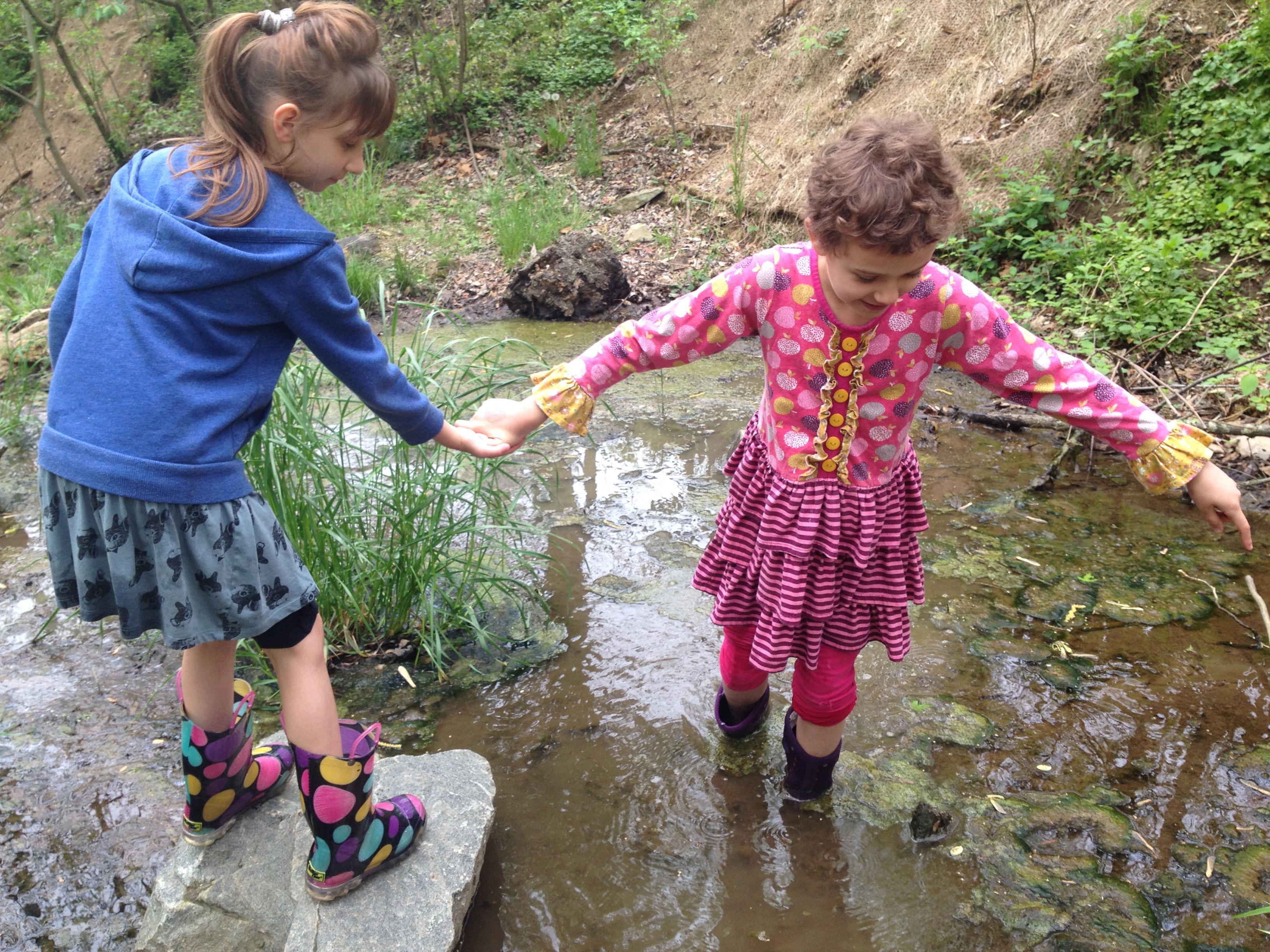
 Looking for tadpoles in the creek pools
Looking for tadpoles in the creek pools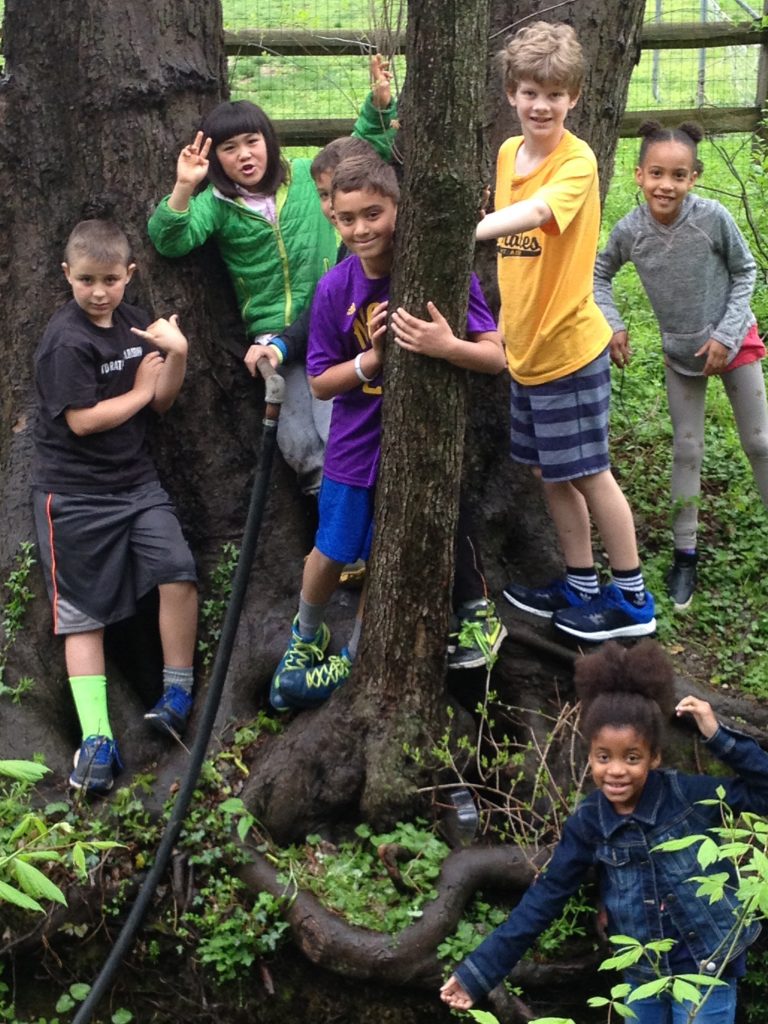 Checking out stormwater flow on campus
Checking out stormwater flow on campus“Children need experiences to attach words to.”
-Lisa Murphy, Play
Giving students opportunities to mess around is a key component of science education at Miquon. In this case, “messing around” means time devoted to becoming curious about something, checking it out, and experiencing the deep engagement that happens during guided exploration. The purpose of this time differs from that of formal experimentation; guided exploration is intended to help students develop the background knowledge they need to ask better questions and make more nuanced predictions.
During this phase of learning, students are not bound to the refined step-by-step procedure that accompanies more structured experimentation. When children investigate materials with a loose goal in mind, they examine objects closely, excitedly share observations, and seek answers to their own questions. Sometimes guided exploration is used at the beginning of a new unit or lesson to help children activate prior knowledge about a topic. At other times, it is used to familiarize students with materials before they design a controlled experiment. This time for exploration, paired with reflection and application, is the backbone of our constructivist approach to building knowledge.
Recently, third and fourth graders began studying the water cycle. To help them understand changing states of matter, it would be useful for them to conceptualize water as little bits (molecules) that link (weakly bond) together. This information could have been shared primarily through books or videos, but wouldn’t it be more meaningful to have experiences with this phenomenon?
 Adding drops of water to a penny
Adding drops of water to a penny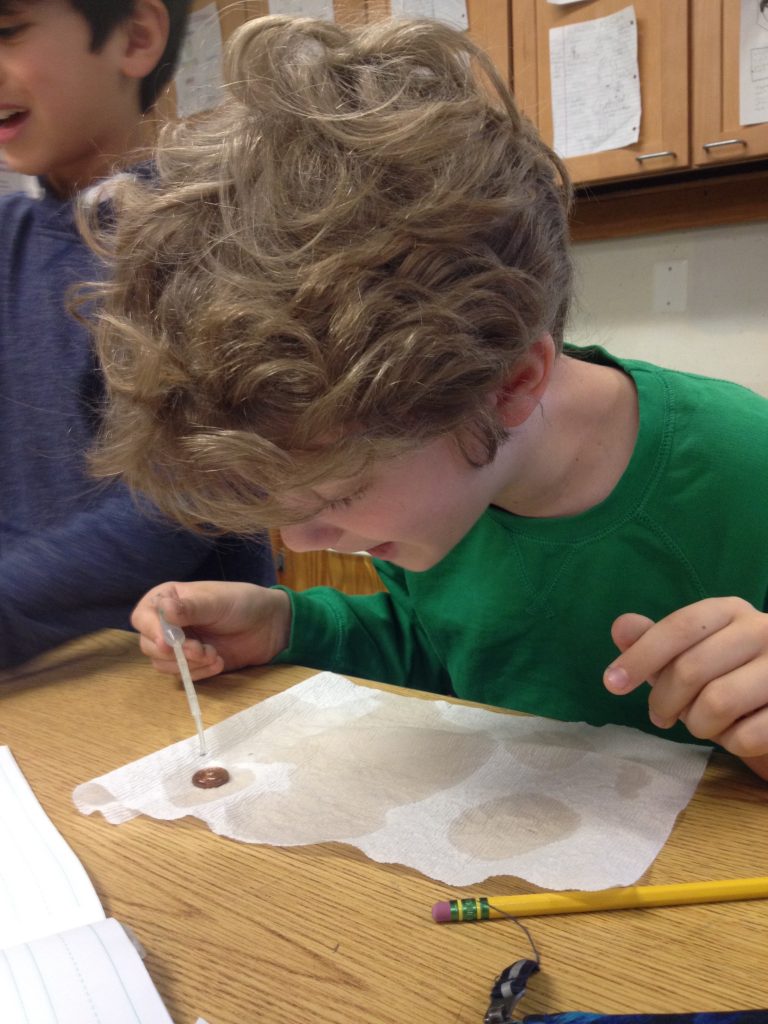 Counting carefully
Counting carefullyTo this end, the kids were confronted with a seemingly silly question: “How many drops of water can you fit on a penny?” Water was described as a little “sticky” and the goal was to see how many drops would stick together before the dome burst. Using pipettes, and the laser like focus that always magically develops during activities I thought were only going to last five minutes, the kids got right down to play. The observations started rolling in:
“25! 26! 27! Awww man!”
“I can’t remember if I used the same side of the penny every time. Wait, do you think that matters?”
“If you hold the pipette up high, it drops harder and breaks the dome. Yeah, it has more force.”
“The little drops on the penny stay separate but link up into big drops as soon as they are close enough to almost touch.”
“My drops aren’t the same size as your drops. How do you make the drops the same size all the time?”
“The water is like a magnifying glass, I can see the year it was made more easily!”
“I wonder if it will be different if we add salt to the water? Can I have some salt?”
“Stop shaking the table! I’m moving to a counter top.”
“It gets too heavy and then it breaks.”
“Can we put these penny domes in the freezer?”
Twenty-five minutes later, we reflected on what we observed and, consequently, clarified a few important properties of water. Students compared the total drop counts that they had listed on the board, looked at whether their own results were consistent, and were eager to continue experimenting with added variables. The next day, classes were offered the option of more formally testing how soap and salt might affect the way water links up (bonds) as it forms a dome on a penny. The challenge was eagerly embraced. Now that kids had manipulated the tools of the trade, they could make reasonable predictions about how certain factors would function.
It was obvious that the time for guided exploration had increased their knowledge about the properties of water; but it had also increased their enthusiasm for doing more formalized research. The students were now personally invested in the experiment and could think critically about how to set it up with minimal facilitation.
The first class spent about fifteen minutes debating the best methodology for the procedure. There were lively discussions about whether each person should keep the same penny throughout all three trials and whether pipettes should travel with each kid or remain in the same bucket of each solution (so they wouldn’t be contaminated with soap or salt). After deciding on an experimental procedure, students created results charts in their notebooks and carefully conducted three trials for each variable (soap solution, salt solution and tap water). Subsequent groups refined the initial procedure as they saw fit and got started. The experimental design thinking that they did to create a “fair test” was just as important as understanding the idea that water is composed of many tinier pieces of matter.
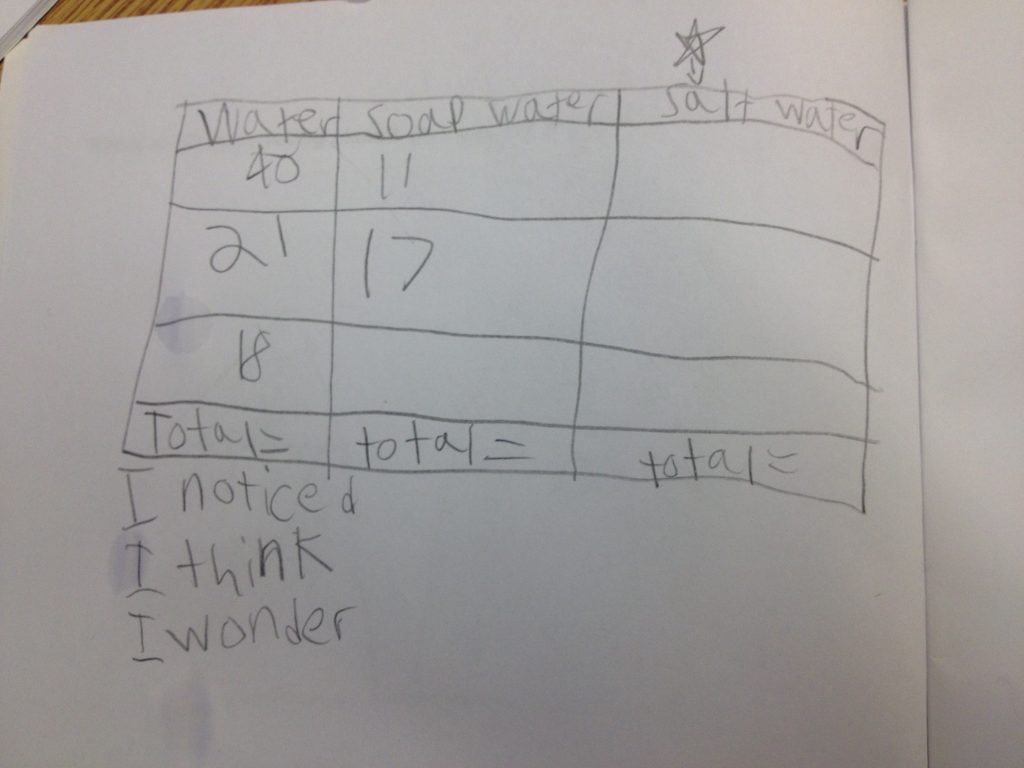 Results chart in progress
Results chart in progressThe results from each class were recorded on the board and left up over the next week so that kids could see how the totals changed (sometimes dramatically) as each class of scientists added their data. This helped us discuss the importance of sample size and why scientists spend a lot of time verifying each other’s work. We also analyzed the results; students offered their ideas about why salt water and tap water had higher drop counts and why soap water had fewer. Many explanations connected back to the initial focus of understanding that water is composed of many tinier pieces and that other substances might weaken or strengthen the links between those pieces. Lastly, they shared thoughtful critiques of unintended variables and questions for future experimentation. The driving force behind all of this good thinking was the initial excitement of simply messing around.
This experiential work was layered with relevant videos, books, hikes, discussions and other experiments. We set up friendly competitions to predict when cups of water might evaporate (this was more exciting than you might think), built model watersheds and made it rain, practiced with vocabulary matching cards, made terrariums, wrote the wild adventures of a raindrop as it traveled through different phases of matter (and bodies), and read a few beautiful books. We’re currently in the process of building water filters to remove contaminants that mix in between those tiny pieces of water as they flow through our watershed.
My hope is that all of these varied experiences are integrated in a way that helps children gain practical knowledge and develop a lifelong appreciation for the very real value of messing around.
 Marking ridges and valleys in a model watershed
Marking ridges and valleys in a model watershed Rain falls on the land (sponges are areas of dense vegetation)
Rain falls on the land (sponges are areas of dense vegetation)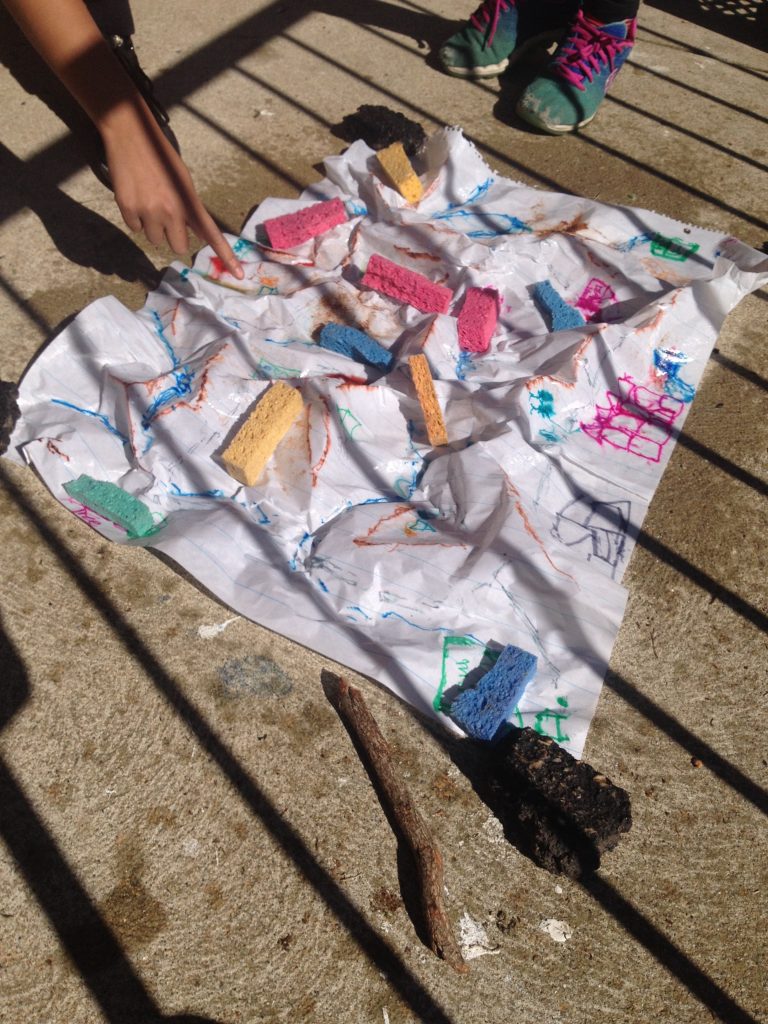 Examining water flow and pollution movement in the watershed
Examining water flow and pollution movement in the watershed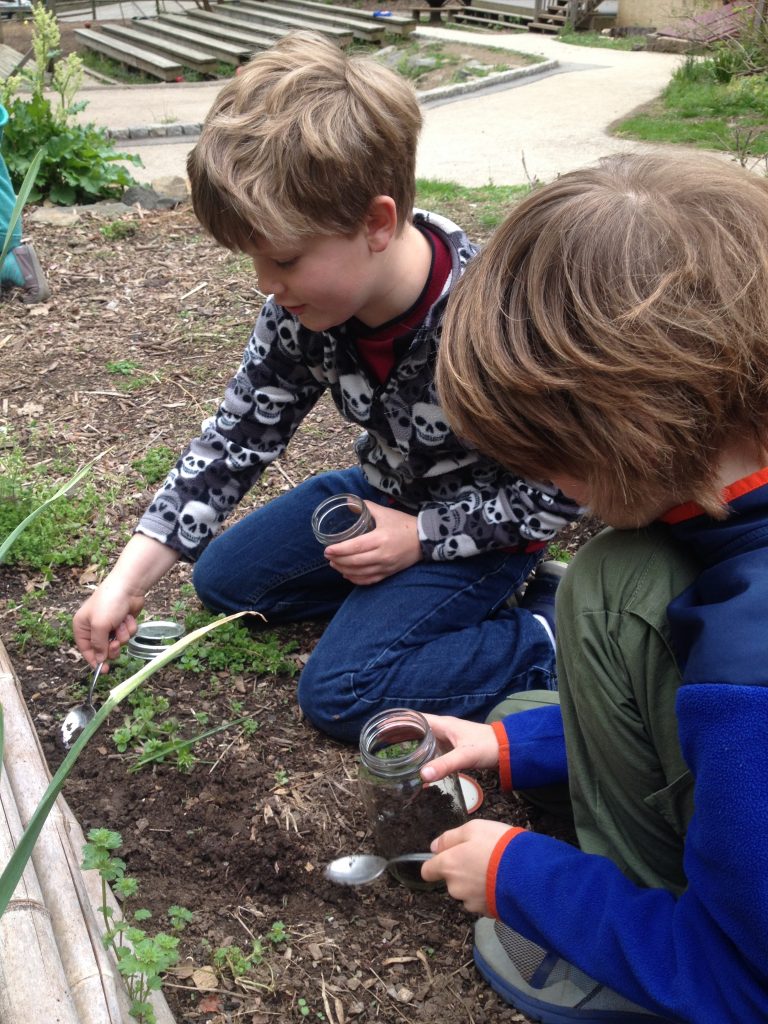 Gathering soil for terrariums
Gathering soil for terrariums Making terrariums
Making terrariums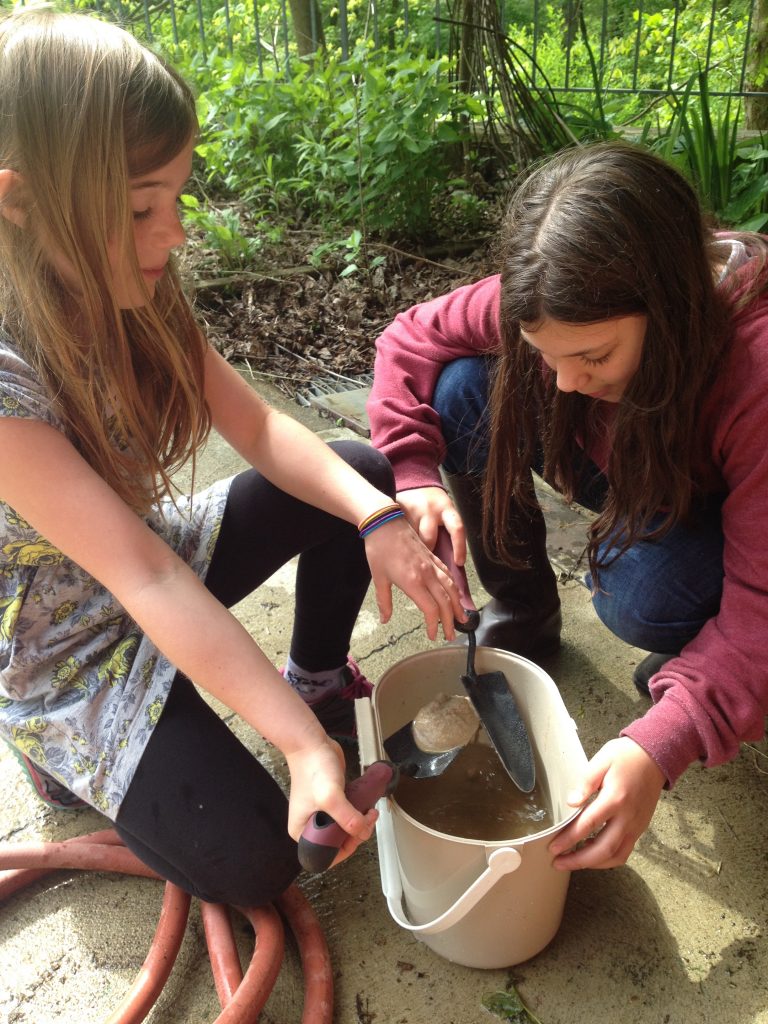 Cleaning sand to use in water filters
Cleaning sand to use in water filters Building and testing water filters to remove soil
Building and testing water filters to remove soil Tadpoles in the creek pools
Tadpoles in the creek pools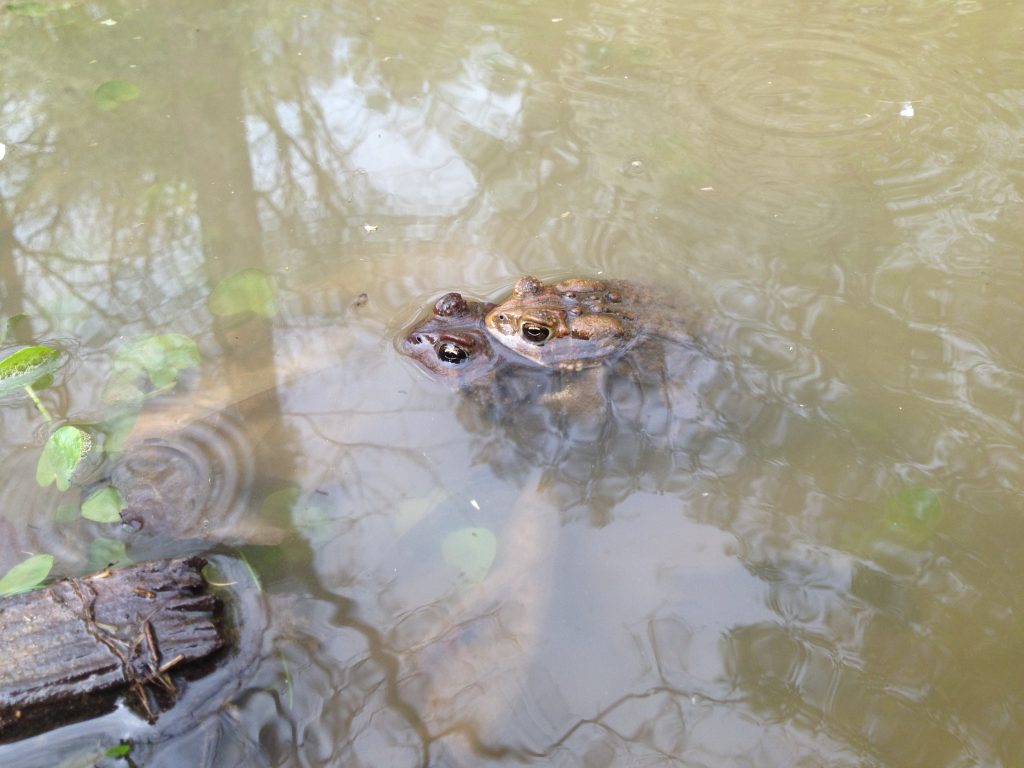 Mating toads! We found their tadpoles the next week!
Mating toads! We found their tadpoles the next week!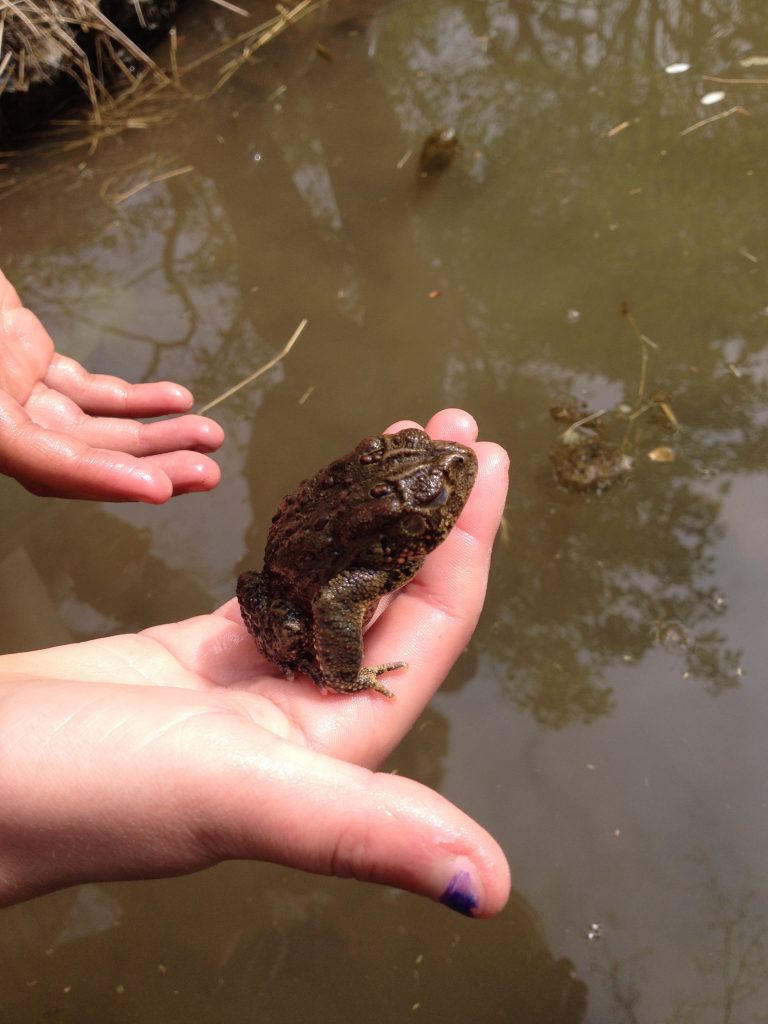 New friend
New friend Helping a friend navigate muddy waters
Helping a friend navigate muddy waters Best tadpole sighting spot in the creek
Best tadpole sighting spot in the creek